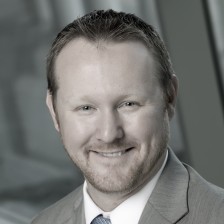Queue the music . . .
Mission: Impossible?
The highest quality. The shortest lead time. The lowest cost. We all know these as the three objectives of the Toyota Production System. But whether it’s recognized or not, all organizations at all times face the same three challenges to operational performance: how to improve quality, delivery AND cost. The emphasis on the word “and” in the previous sentence is intentional. Here’s why.
Improvement initiatives, specifically efforts to become lean, are frequently derailed by the misconception that AND is interchangeable with OR. This couldn’t be further from reality. When “lean” is employed to improve quality, OR delivery OR, more commonly, to improve cost, performance will erode over time, despite our best efforts.
Why? Because the OR mindset throws the organization out of balance. For example. measures taken solely to improve quality will often lead to increased costs. Eventually, the need to squeeze out additional costs arises and results in poor delivery performance. The resulting pressure to improve lead times leads to a sacrifice of quality. Overall, performance declines as the cycle repeats itself over and over again like a wheel that is out of balance. Long-term, sustained improvement is an impossible mission when equipped with the OR mindset.
What we need is AND thinking to provide balance and stability as we improve long-term. But, how?
The Wisdom of Dr. Shingo
In his book, Non-Stock Production: the Shingo System of Continuous Improvement, Dr. Shingo provides guidance on the goals of improvement:
“There are four purposes of improvement: easier, better, faster and cheaper. These four goals appear in the order of priority.” ~Dr. Shigeo Shingo
Within this quote, Dr. Shingo makes two points that are fundamental to a stable and balanced approach to becoming lean:
Methods Enable Results
First, we must recognize the difference between means and ends. Higher quality, shorter lead times, lower costs . . . each is only an outcome. It might sound obvious and somewhat silly, but we must recognize that we do not do better, faster or less costly processes; we achieve these ends only by focusing on our means. That is to say, by looking at what it is that we do, and by making those things easier.
Think of any activity that you routinely perform, and consider how the relative ease or difficulty of that task affects the outcomes. Take, for example, the act of driving. When the roads are slick, when visibility is poor, when we are unfamiliar with the route – which is to say when driving is not easy – what are the results? Likely, a slower, less enjoyable, and potentially more costly trip than that to which we are accustomed. It also should be noted that an unbalanced approach to the “improvement” of this situation – e.g., driving faster in order to arrive sooner – would likely only lead to catastrophe. Instead, by maintaining balance and removing the complicating factors – a bright, clear day and a route we know well – we are much more likely to enjoy the ride and to arrive at our destination on-time and with minimal costs incurred.
When the means are made easy, better, faster AND cheaper are the inevitable ends.
People are First and Foremost
If easier is our first improvement priority, it’s important to understand what exactly easier means. It does not take a scholar to deduce that the word easier is derived from the word easy, which is defined as follows:
 Note that the definition is two-fold. Easier means doing with less effort and with less worry. In other words, easier removes burden both physically and mentally. And in this sense, it becomes apparent that to make an activity easier is to better fit the task to the human.
Note that the definition is two-fold. Easier means doing with less effort and with less worry. In other words, easier removes burden both physically and mentally. And in this sense, it becomes apparent that to make an activity easier is to better fit the task to the human.
In addition to providing better, faster and less costly outcomes, the humanization of our processes also helps to ensure a state of balance in a different, but equally important dimension. Organizations frequently cite a struggle to find the time and energy for improvement as a significant obstacle in their lean transformation. We struggle as the scale tips in the direction of doing the work to achieve an outcome now, over improving the work to achieve a better outcome in the future.
Activities that are not easy consume more time and demand the lion’s share of our physical and mental resources. If all of our efforts are focused simply on doing our work, we have little, if any, human capacity remaining to improve our work. However, as we focus on relieving our physical and mental burden, we gain back both the time and the energy needed to drive further improvements. In this sense, doing work and improving work are not independent, discrete activities but two ends of a chronological continuum. As our work is made easier – as we free up our physical and our mental capacity – we shift the balance away from simply doing and towards that which makes us fundamentally human: our ability to think and act in pursuit of improvement.
Is your organization struggling to find balance between quality, cost and delivery? How has a focus on “easy” impacted your work? Share a story below!


Leave a Reply